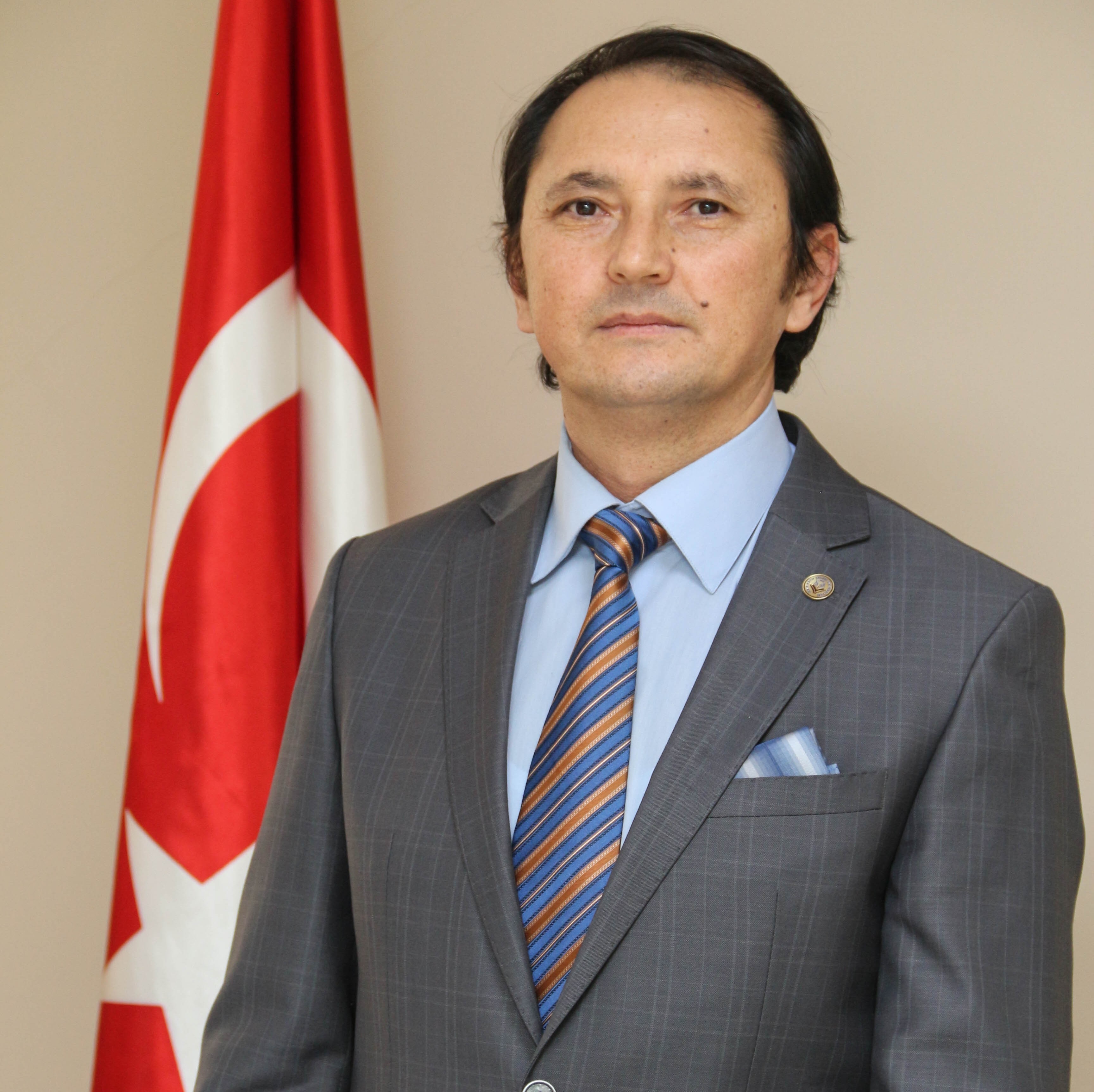Research Article
Issue Editorial Board




Aim & Scope
Focus and Scope of the Journal
International Journal of Contemporary Tourism Research (IJCTR) is a blind peer-reviewed international journal and publishes original papers covering a large array of topics in Tourism about economics and administrative sciences. The IJCTR will publish articles in English and Turkish. The Review offers authors the possibility to have their papers accepted in less than three months. IJCTR is open access. You can read the full text by registering to journal via https://dergipark.org.tr/ijctr.
The IJCTR is published by the Izmir Katip Çelebi University, Faculty of Tourism (http://turizm.ikc.edu.tr/S/15907/fakulte-dergisi)
The scope of IJCTR encompasses theoretical, empirical or policy-oriented research articles, original research reports, reviews, short communication and scientific commentaries in the fields of social sciences, economics, business, management, law, political science, sociology, philosophy related with Tourism.
Author Guidelines
Click here for the copyright form.
Click here to access writing rules.
Click here to access an example of reply to referees.
Click here to access the declaration form of no ethics committee permission.
1. The manuscript should be prepared in accordance with the spelling rules of the language in which it is written.
2. In manuscript writing, the page size should be chosen as A4 (20.99 x 29.7 cm) and the margins of the page should be narrow (bottom-top-right-left; 1.27 cm margin).
3. The article file should not exceed 25 pages with the specified page size and margin, including appendices and bibliography.
4. The article file should not contain any information that may indicate the names of the author(s). If the work is prepared with Microsoft Word, make sure that the user names in the "author" and "last modified" information of the relevant program are not the same as the names of the authors.
5. Times New Roman font should be used throughout the article file.
6. The title of the article at the top, titles; 12 Points, Times New Roman, Bold, 1 Line Spacing, the first letter of each word should be capitalized. (If the language of the article is Turkish, the English title of the study should be written in a way that in parentheses immediately after the Turkish title, Times New Roman, 1 Line Spacing and the first letter of each word capitalized. There is no need to write a Turkish title for articles whose language is English……….
7. Abstract: Abstract should be written in 10 points bold and italic. The text should be written in 9 points and single line spacing (Before; 3nk – Then 3nk spacing). The abstract should be a minimum of 150 and a maximum of 200 words.
8. Keywords: Should be written left-justified, 9 points, Times New Roman, single line spacing (Before; 3nk - Then; 3nk).
9. Titles of the Study:
• All section titles should be capitalized, bold, and left-aligned.
• Each study should consist of an introduction, conceptual framework (related chapter headings), method, conclusion and bibliography.
• Except for the Introduction, Conclusion, and Bibliography, the main headings should be numbered as (2. 3. 4. etc.). If there are sub-headings, they should be numbered as (2.1. 2.2. and 3.1. etc.).
• Subheadings; 11 points, bold, left justified AND ONLY THE FIRST LETTER OF THE WORDS SHOULD BE CAPITAL.
The ordering examples of the titles to be included in the study are given below.
• INTRODUCTION
Do not number the introduction title.
• 2. CONCEPTUAL FRAMEWORK
• 2.1. Second-degree subheading
• 2.2. Second-degree subheading
• 2.2.1 Third degree subheading
• 3. METHOD
In studies that require ethics committee permission, information about the permission (name of the committee, date and number) should be included in this section.
• FINDINGS
• RESULT
Do not number the result title.
Discussions and suggestions in the text of the study should be written under this title.
• REFERENCES
Do not number the reference's title
• Ethics committee approval, Statement of contribution rate, Statement of support and thanks (if any), Statement of conflict.
10. Tables, Figures, and Graphics:
• Tables, Figures, and Graphics should be numbered.
• Table titles should be written above the table in bold, with the first letter of each word capitalized, 11 points, and in the middle of the page.
• The texts in the table; It should be written in 10 pt, Line spacing Single and Before 0nk - Then 0nk, Times New Roman character.
• All figures and tables should be cited in the text. If the author (s) composed the table herself, it should be indicated as "composed by the author(s)". If it is a direct quote, the page number must be specified. If citations are made indirectly by using various sources, the sources should be indicated and given as adapted from the works of ………
11. All work text outside the specified fields should be written as follows. The page number should not be specified.
• Points: 11
• Font Type: Times New Roman
• Line Spacing: One and Before; 3nk – Then; 3nk
• Lean on two sides.
• Specifying page numbers when referring to indirect quotations in the text is left to the discretion of the author(s). For indirect quotations, it is necessary to specify the page number and specify the quotation in quotation marks.
• Page Number Display: should be performed using. (Surname, 2021: 13).
• When referring to the works of the same author or legal person in the same year (eg. Surname, 2001a, Surname, 2001b), a way is followed.
• When citing multiple sources, sorting should be done by year of publication. Example (Surname, 1991: 22; Surname, 1998: 145; Surname, 2015: 254).
• In multi-author publications, first author surname (Kaplan et. al, 1999), if an inaccessible publication is cited, should be like (Surname, 1973 from Surname, 1988) and if an oral source is used, the source person information should contain Name, Surname, Date, and Place of Interview.
• If the publication date cannot be found, the latest copyright date is given. If the date information cannot be found at all, the "n.d" abbreviation is used, meaning "no date".
• When referring to web resources, http://www. without the part and the access date should be in the form Day, Month, Year. (turizm.ikcu.edu.tr, 19.01.2021).
12. Citation
• Footnotes should not be used in citing references.
• Specifying page numbers when referring to indirect quotations in the text is left to the discretion of the author(s). For indirect quotations, it is necessary to specify the page number and specify the quotation in quotation marks.
• Page Number Display: should be performed using. (Surname, 2021: 13).
• When referring to the works of the same author or legal person in the same year (eg. Surname, 2001a, Surname, 2001b), a way is followed.
• When citing multiple sources, sorting should be done by year of publication. Example (Surname, 1991: 22; Surname, 1998: 145; Surname, 2015: 254).
• In multi-author publications, first author surname (Kaplan et. al, 1999), if an inaccessible publication is cited, should be like (Surname, 1973 from Surname, 1988) and if an oral source is used, the source person information should contain Name, Surname, Date, and Place of Interview.
• If the publication date cannot be found, the latest copyright date is given. If the date information cannot be found at all, the "n.d" abbreviation is used, meaning "no date".
• When referring to web resources, http://www. without the part and the access date should be in the form Day, Month, Year. (turizm.ikcu.edu.tr, 19.01.2021).
13. References
• Studies in the bibliography should be arranged according to APA7.
• You can find unexampled citations from the APA 7 reference examples https://apastyle.apa.org/ or at https://apastyle.apa.org/style-grammar-guidelines/references/examples.
• References should be listed in alphabetical order, and notations such as 2000a and 2000b should be given in alphabetical order for two or more sources of the same author within the same year.
• If the number of authors is more than six, the names of the first six authors are given in the bibliography, and the expression "et al" is used after the sixth author.
• While the tags of the books are given, there is no need to specify the 1st Edition. For the second and subsequent editions, an abbreviation is used like “2nd. Ed.”
• After the name of the person who prepared the publication, the abbreviation (Aut.) is used instead of the author(s), and the abbreviation (Ed.) is used instead of the editor(s).
• Journal and book titles are written in italics without abbreviation. Proceedings books are indicated as a book, and a paper taken from the proceedings book is indicated as a book chapter.
• In theses, "master's thesis", "doctoral thesis" or "proficiency in art thesis" expressions are used after the name of the thesis. The name and location of the university where the degree was awarded are indicated.
• In-laws and regulations, the imprint entry is made from the name of the law. After the name of the law, the date of acceptance of the law (only in a year) is indicated in brackets, and at the end of the imprint, the date of the journal in which the law was published (as day, month, year).
• In electronic resources, the access date and address should be given in addition to basic information. In e-resources, the last update date is taken as the publication date.
• Personal conversations such as letters, e-mails, telephone conversations do not need to be included in the bibliography, in-text citation is sufficient.
• The figure of "&" should be used in in-text citations and bibliography.
Ethical Principles and Publication Policy
Publication Ethics and Publication Malpractice
- Is methodologically sound
- Follows appropriate ethical guidelines
- Has results which are clearly presented and support the conclusions
- Correctly references previous relevant work.
* IJCTR publishes biannually.
* IJCTR publishes in Turkish and English.
* Scientific articles are published and empirical (practical/experimental) researches are given priority in the journal.
* The responsibility of opinions expressed in articles entirely belong to the authors
* The studies submitted to IJCTR for publications must not be published in other journals before.
* The studies submitted to IJCTR should be prepared by entirely obeying the scientific ethics rules.
* Copyright fees or any other payments under another name are not paid to the authors for their articles.
* The authors who submit studies to the journal are considered as agreed not to demand this kind of claim.
Attention to Authors:
Sample ORCID number: https://orcid.org/0000-0001-2345-6789
Price Policy
The International Journal of Contemporary Tourism Research (IJCTR) is open access, a blind peer-reviewed international journal published in English and Turkish. IJCTR does not charge authors for submission or publication.
Indexes
Journal Boards
Owner on Behalf of Izmir Katip Celebi University

Editor in Chief

Editors

Prof. Dr. Atilla AKBABA
atilla.akbaba@ikcu.edu.tr
Linked-in: linkedin.com/in/atilla-akbaba-6a5b6268
Instagram: atillaakbaba1
İzmir Kâtip Çelebi Üniversitesi, Turizm Fakültesi
Gastronomi ve Mutfak Sanatları Bölüm Başkanı
Dr. Atilla AKBABA 1969 yılında Kars’ta doğdu. İlkokul, ortaokul ve lise öğrenimini Kdz. Ereğli’de tamamladı. Lisans öğrenimini 1991 yılında Akdeniz Üniversitesi Turizm İşletmeciliği ve Otelcilik Yüksekokulu’nda tamamladı. Daha sonra, Milli Eğitim Bakanlığı tarafından açılan burs sınavını kazanarak Amerika Birleşik Devletleri’ne gitti ve 1997 yılında Florida International University, The School of Hospitality’den yüksek lisans derecesi aldı. 2003 yılında Dokuz Eylül Üniversitesi, Sosyal Bilimler Enstitüsü, Turizm İşletmeciliği Doktora Programı’nı tamamlayarak doktora derecesi aldı. Lisans ve yüksek lisans öğrenimi sırasında Türkiye, Almanya ve Amerika Birleşik Devletleri’nde çeşitli turizm işletmelerinde çalışma ve inceleme yapma olanağı buldu. Şu anda İzmir Kâtip Çelebi Üniversitesi, Turizm Fakültesi’nde görev yapmakta olan Prof. Dr. Atilla Akbaba Gastronomi ve Mutfak Sanatları Bölüm Başkanlığı görevini yürütmektedir. Turizm Fakülteleri Dekanlar Konseyi (TURDEK) Kurucu Başkanı olan ve bir dönem TURDEK yürütme Kurulu Başkanlığı görevini de yürüten Atilla Akbaba, Uluslararası Güncel Turizm Araştırmaları Dergisi’nin kurucusudur ve editör görevini de sürdürmektedir. Evli ve iki çocuk sahibi olan Prof. Dr. Atilla Akbaba’nın akademik ilgi alanlarında yurt içinde ve yurt dışında yayınlanmış çeşitli makale, kitap, bildiri ve çevrileri vardır.
Field Editors





Journal Secretary




















